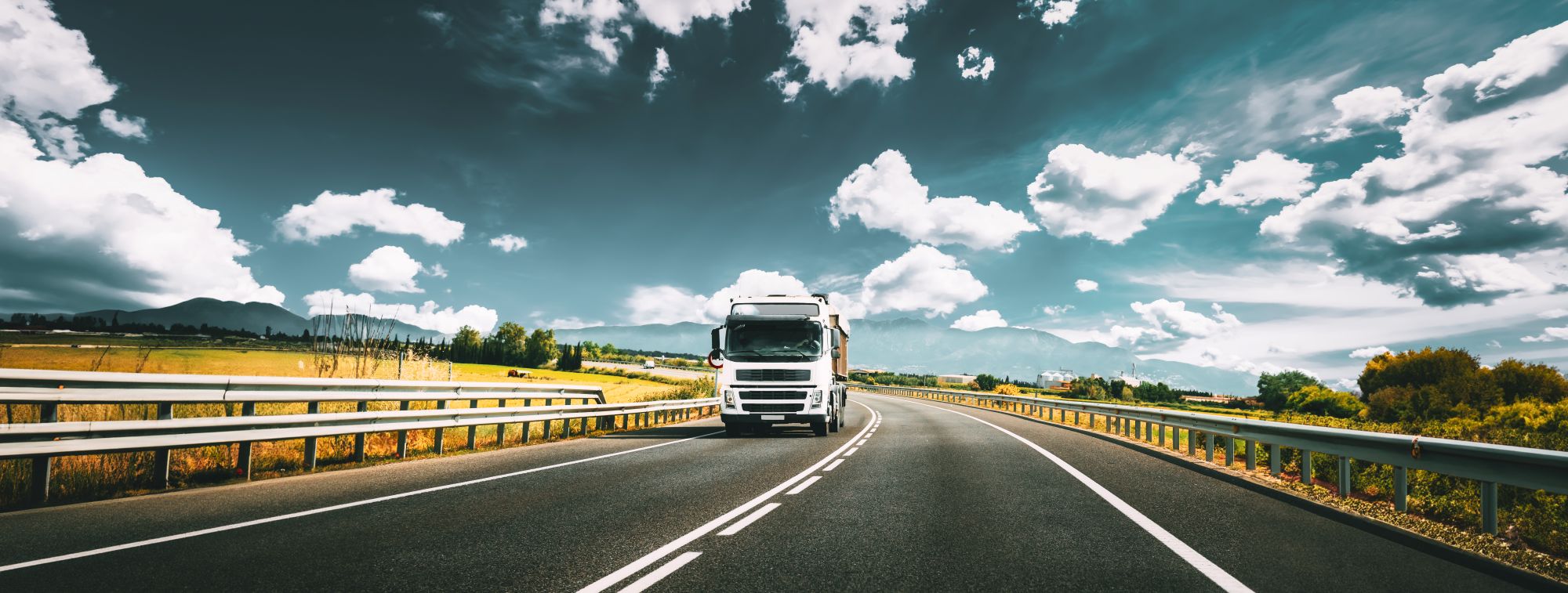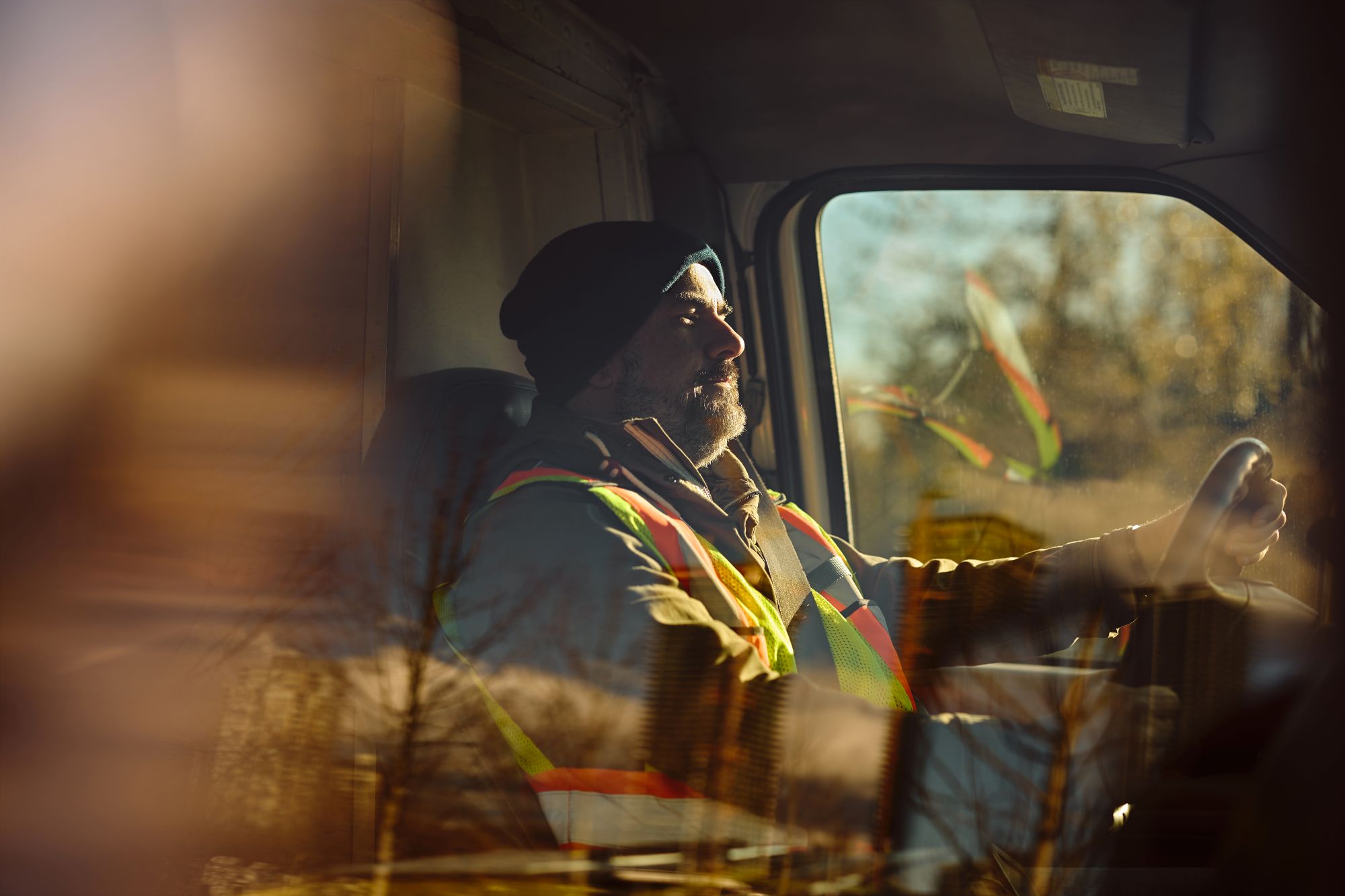
Guest
De explosieve groei van de Roemeense infrastructuur - Wat betekent dit voor de mobiliteitssector?
Gemaakt: 22-09-2025
•
Bijgewerkt: 22-09-2025
Roemenië ontwikkelt zich snel tot een strategisch logistiek en vrachtknooppunt in Zuidoost-Europa. Ondersteund door miljarden aan EU- en nationale financiering trekt de renaissance van de infrastructuur in het land wagenparkbeheerders, logistieke investeerders en fabrikanten aan. In dit artikel onderzoeken we wat deze ontwikkelingen betekenen voor wagenparken, chauffeurs en de transportsector in het algemeen.
Het tempo en de omvang van de Roemeense transportinfrastructuur zijn drastisch veranderd. De regering heeft ongeveer 25 miljard lei (4,27 miljard pond) gereserveerd voor wegenprojecten in 2026, wat een ongekende focus op snelwegen en goederencorridors weerspiegelt.
Medio 2025 had Roemenië ongeveer 1.325 km snelwegen in gebruik (1.188 km autosnelwegen en 138 km autowegen), met nog eens 741 km in aanbouw en 669 km in de aanbestedingsfase.
Tegen 2030 wil Roemenië zijn snelwegennet verdubbelen, strategische spoorwegroutes moderniseren, het stedelijk vervoer uitbreiden en regio's verbinden die lange tijd geïsoleerd waren. De uitdaging is enorm, maar het resultaat zou de positie van het land op de Europese transportkaart kunnen veranderen.
Een van de belangrijkste projecten is de A7 noord-zuidas van Ploiești naar Siret, die het vervoer naar de Oekraïense grens zal bevorderen en in 2026 klaar moet zijn. Een ander project is een 11 km lange snelweg die Satu Mare verbindt met de Roemeense grens met Hongarije. De A0 Ringweg rond Boekarest zal het vracht- en passagiersverkeer rond de hoofdstad vergemakkelijken, waarvan de zuidelijke helft al in gebruik is. Andere belangrijke werken zijn de corridors Suceava-Oar en Timișoara-Moravița, evenals de 2,9 km lange Meseș-tunnel, die de langste wegtunnel in Roemenië moet worden.
"Deze corridors verbeteren niet alleen de oost-west- en noord-zuidverbindingen - ze verbinden voorheen geïsoleerde regio's zoals Moldavië en het noordoosten met de rest van het land en de EU", zegt Eduard Ularu, Business Development Manager bij SNAP.
Maar infrastructuur is niet alleen wegen. De Brăila-brug over de Donau, die in juli 2023 wordt geopend voor een bedrag van 500 miljoen euro (363 miljoen euro medegefinancierd door de EU), biedt de eerste oversteek over de maritieme Donau en verbetert de verbindingen met Constanța en Dobruja aanzienlijk.
Andere belangrijke ontwikkelingen zijn de geplande verbetering van de spoorwegen in de haven van Constanța en de €130 miljoen kostende uitbreiding van de container- en roro-capaciteit door DP World Roemenië, waardoor de doorvoer wordt verdubbeld en logistieke verbindingen over de weg en het spoor worden toegevoegd.
Waarom het belangrijk is
De Roemeense vracht- en logistiekmarkt is aanzienlijk. De markt wordt geschat op ongeveer USD 21,11 miljard in 2025 en zal naar verwachting stijgen tot USD 24,27 miljard in 2030. Ondertussen wordt alleen al het wegvrachtsegment geschat op USD 9,07 miljard in 2025 en zal dit stijgen naar USD 10,37 miljard in 2030.
Deze cijfers weerspiegelen de groeiende rol van Roemenië als trans-Europese corridor die routes bedient vanuit Hongarije, Bulgarije, Oekraïne, Moldavië en de havens aan de Zwarte Zee. Oekraïne stuurt nu een groot deel van zijn [graanexport via Constanța] (https://breakbulk.news/romanias-government-approves-railroad-upgrades-for-constanta-port/) aan de Zwarte Zeekust en streeft naar een verdubbeling van 2 miljoen naar 4 miljoen ton per maand via de Roemeense infrastructuur.
"Deze investeringen zullen Roemenië helpen om sterker te concurreren met grote logistieke knooppunten zoals die in Polen en Griekenland," zegt Eduard Ularu. "Constanța heeft een enorm potentieel en met de juiste infrastructuur kan het eindelijk de toegangspoort voor de Europese handel worden die het had moeten zijn."
Verbeterde opslag, lagere arbeidskosten en trends op het gebied van friend-shoring moedigen fabrikanten en detailhandelaars aan om logistieke centra in Roemenië te vestigen, waardoor de vraag op de wegen toeneemt en de groei in het hele netwerk wordt gestimuleerd.

Digitale ontwikkelingen
De infrastructuurupgrades zijn niet alleen fysiek - ze zijn ook digitaal. Terwijl het land zijn snelwegen en vrachtcorridors uitbreidt, worden er slimme systemen ingebouwd die ontworpen zijn om sneller, veiliger en efficiënter te reizen.
In het hele netwerk worden [intelligente verkeersmonitoringinstrumenten] (https://www.itf-oecd.org/sites/default/files/docs/smart-use-roads_1.pdf) geïnstalleerd, waaronder sensoren voor het wegen in beweging, inductieve verkeerslussen en camera's langs de weg. Deze systemen zullen worden ingevoerd in real-time verkeerscontrolecentra in steden als Boekarest, Brașov en Timișoara, waardoor autoriteiten en wagenparkbeheerders sneller kunnen reageren op incidenten en files.
Boekarest is ook bezig met het upgraden van de verkeerslichtinfrastructuur, waarbij AI en slimme detectoren worden gebruikt om de voertuigstromen te optimaliseren en knelpunten te verminderen. Dit heeft grote gevolgen voor vrachtvervoerders die door dichtbevolkte stedelijke gebieden navigeren, de betrouwbaarheid van reistijden verbeteren en stationair draaien verminderen.
Op nationaal niveau verschuift Roemenië naar [digitaal rekeningrijden] (hhttps://business-review.eu/business/transport-and-logistics/eltra-logis-the-new-tollro-road-charging-system-can-be-a-catalyst-for-fleet-renewal-285636). Het nieuwe TollRO-systeem - dat in 2026 van start moet gaan - zal het huidige e-vignet vervangen door een afstandsgebaseerd, emissiegevoelig tolmodel, in lijn met EU-richtlijnen. Deze verandering zou schonere wagenparken kunnen aanmoedigen en eerlijkere prijzen kunnen bieden aan logistieke bedrijven die investeren in voertuigen met een lage uitstoot.
Voor bestuurders betekent dit minder vertragingen, duidelijkere realtime informatie en beter reagerende wegomstandigheden. Voor exploitanten is het een kans om de planning van het wagenpark, het routebeheer en de duurzaamheidsstrategieën op de toekomst af te stemmen.
Gevolgen voor vloten en bestuurders
Voor vloten en bestuurders brengt de modernisering van Roemenië zowel voordelen als nadelen met zich mee. Het belangrijkste is misschien wel dat de efficiëntie van het netwerk zal verbeteren. Met vlottere routes en snellere corridors zullen de investeringen waarschijnlijk leiden tot kortere reistijden en minder stationair draaien. Gevaarlijke enkelbaans nationale wegen zullen geleidelijk worden vervangen door veiligere, snellere snelwegen. Dit zal de productiviteit verhogen en ook de tijd die bestuurders achter het stuur doorbrengen verminderen.
Het is echter niet allemaal positief. Lopende werkzaamheden aan snelwegen zoals de A7 en A8 kunnen leiden tot vertragingen en routewijzigingen tijdens de werkzaamheden. Het kan ook leiden tot grotere vrachtvolumes (vooral bij Constanța en grensovergangen), waardoor de bestaande infrastructuur onder druk kan komen te staan.
"Op dit moment zorgen bouwzones zoals de DN2 en delen van de ringweg A0 Boekarest voor omleidingen en knelpunten", legt Ularu uit. "Vrachtwagens verliezen uren op routes die slechts enkele minuten zouden moeten duren - en dat heeft gevolgen voor alles, van brandstofbudgetten tot leveringsbetrouwbaarheid."
Daarnaast vereisen nieuwe corridors, strengere veiligheidsregels en verschuivende heffingen voor weggebruik meer aandacht voor naleving.
Het welzijn van chauffeurs ondersteunen tijdens de overgang
Ondanks de verbeterde infrastructuur zijn er in sommige vrachtcorridors nog steeds weinig veilige parkeer- en welzijnsfaciliteiten, vooral in de buurt van grensgebieden en grote hubs. In bouwzones zijn er vaak geen formele rustzones, waardoor chauffeurs worden blootgesteld en nergens kunnen rusten.
"We zien nog steeds gevaarlijke tussenstops en overvolle parkeerplaatsen op belangrijke vrachtroutes," zegt Eduard. "Moderne snelwegen zorgen voor speciale service- en rustplaatsen om de 30-50 kilometer, compleet met tankstations, winkels en eetzalen. Voor chauffeurs betekent dit veiliger parkeerplaatsen, met goede verlichting, camerabewaking en veilige rustzones die het risico op diefstal verkleinen. Sanitaire voorzieningen zoals douches en schone toiletten - een zeldzaamheid op nationale wegen - zullen eindelijk de norm worden."
SNAP pakt deze leemte aan met zijn interactieve parkeerkaart in heel Roemenië. Chauffeurs kunnen via de SNAP-kaart gemakkelijk betrouwbare en beveiligde vrachtwagenparkeerplaatsen vinden, waar beschikbaar van tevoren plaatsen reserveren en veiligere routes plannen.
Plan je een reis door Roemenië? Gebruik de SNAP-kaart om veilige, chauffeursvriendelijke parkeerplaatsen te vinden langs de belangrijkste vrachtroutes.
De duurzaamheid
Dit moderniseringsproces van de infrastructuur speelt ook een sleutelrol bij het mogelijk maken van een groenere logistiek. Met een betere doorstroming van het verkeer zal er minder uitstoot zijn door stationair draaiende voertuigen en stoppen-met-rijden.
Er zullen ook verbeteringen worden aangebracht aan de transportcorridors om de opkomende infrastructuur voor EV en het tanken van waterstof te ondersteunen, waardoor de afhankelijkheid van fossiele brandstoffen afneemt.
Een regio in beweging
De Roemeense investeringen in infrastructuur betekenen een cruciale verandering voor het vrachtvervoer en de mobiliteit in Zuidoost-Europa. Voor vloten betekent dit snellere corridors, een grotere logistieke capaciteit en grotere handelsvolumes, maar ook een strenger toezicht op welzijn, naleving en veerkracht.
Als vooruitdenkende leider in de sector pleit SNAP voor goed geïnformeerde operaties, flexibele routeplanning en chauffeursgerichte tools die zowel de veiligheid als de efficiëntie ondersteunen. Roemenië moderniseert niet alleen - het hervormt ook de manier waarop goederen door de regio worden vervoerd.
"Dit gaat niet alleen over wegen - het gaat over veerkracht, duurzaamheid en het bouwen aan een slimmere toekomst voor het vrachtvervoer in heel Europa. Roemenië bevindt zich in het hart van die verschuiving," aldus Eduard.



